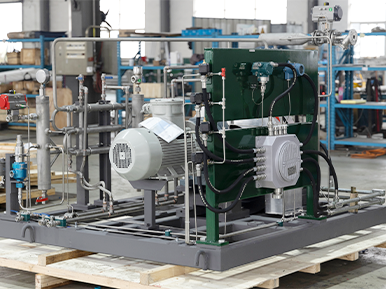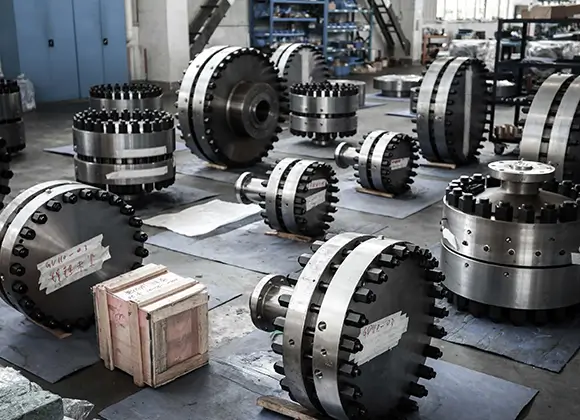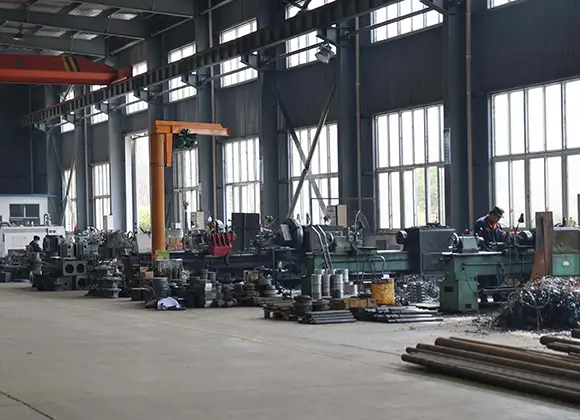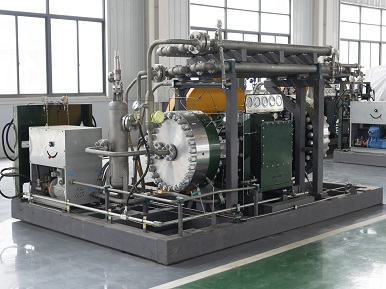

Hydrogen serves as a versatile energy source with immense potential. Understanding the different types of hydrogen becomes crucial for informed decision-making. Blue hydrogen vs green hydrogen represents a significant comparison in the energy sector. Blue hydrogen production involves splitting natural gas, while green hydrogen uses renewable sources like wind and solar. Each type offers distinct benefits and challenges. The comparison helps you grasp the implications for sustainable energy solutions.
Hydrogen stands as the most abundant element in the universe. The atomic number of hydrogen is one, making it the simplest element. Hydrogen exists as a colorless, odorless gas at room temperature. The lightest element, hydrogen, has a high energy content by weight. This characteristic makes hydrogen an attractive energy carrier.
Hydrogen plays a crucial role in the global energy transition. The potential of hydrogen to store and deliver energy efficiently supports renewable energy integration. Hydrogen can power fuel cells, providing clean electricity for vehicles and buildings. The versatility of hydrogen enables its use in various sectors, including transportation and industry. The shift towards hydrogen helps reduce reliance on fossil fuels, contributing to a sustainable future.
The color-coding system categorizes hydrogen based on production methods. Gray hydrogen comes from natural gas without carbon capture. Blue hydrogen also originates from natural gas but includes carbon capture and storage. Green hydrogen uses renewable energy sources like wind and solar to split water into hydrogen and oxygen. Each type offers different environmental and economic implications.
Blue hydrogen involves splitting natural gas into hydrogen and carbon dioxide. The process employs methods like Steam Methane Reforming (SMR) or Auto Thermal Reforming (ATR). Carbon capture and storage play a vital role in reducing emissions from blue hydrogen.
Green hydrogen, on the other hand, relies on renewable energy to produce hydrogen. Electrolysis splits water into hydrogen and oxygen using electricity from wind, solar, or hydropower. The production of green hydrogen results in zero carbon emissions, making it the cleanest option.
Scientific Research Findings:
Potential for Hydrogen Production from Key Renewable Resources in the United States highlights the vast potential for green hydrogen production.
UW Researchers Examine Economic Effects on Technological Advancements of Blue Hydrogen Production focuses on reducing costs associated with blue hydrogen.
Understanding these differences aids in evaluating the best approach for sustainable energy solutions.
Blue hydrogen production involves splitting natural gas into hydrogen and carbon dioxide. Steam Methane Reforming (SMR) and Auto Thermal Reforming (ATR) serve as the primary methods. These processes rely on high temperatures to break down methane molecules. The resulting hydrogen can then be used as an energy source. Carbon dioxide, a byproduct, requires careful management.
Carbon capture and storage (CCS) play a crucial role in blue hydrogen production. CCS technology captures carbon dioxide emissions before they enter the atmosphere. The captured carbon dioxide is then stored underground or used in other industrial processes. This approach reduces the environmental impact of blue hydrogen. However, the efficiency of CCS technology varies.
Blue hydrogen offers cost advantages over green hydrogen. The use of natural gas makes blue hydrogen production more affordable. Existing infrastructure for natural gas can also support blue hydrogen. This reduces the need for new investments. Tax credits and natural gas prices further influence production costs.
Blue hydrogen benefits from existing infrastructure compatibility. Natural gas pipelines and storage facilities can accommodate blue hydrogen. This compatibility allows for easier integration into current energy systems. The transition to blue hydrogen requires fewer changes to infrastructure. This advantage supports the adoption of blue hydrogen as a transitional energy source.
Blue hydrogen presents environmental concerns. Methane leakage during production contributes to greenhouse gas emissions. Methane has a higher global warming potential than carbon dioxide. Incomplete carbon capture also poses environmental risks. These factors limit the sustainability of blue hydrogen.
Carbon capture efficiency remains a challenge for blue hydrogen. Current CCS technologies do not capture all carbon dioxide emissions. The effectiveness of CCS depends on various factors, including technology and site conditions. Inefficient carbon capture undermines the environmental benefits of blue hydrogen. Continuous research aims to improve CCS efficiency.
Green hydrogen production involves the process of electrolysis. Electrolysis splits water into hydrogen and oxygen using electricity. The electricity comes from renewable sources. Wind, solar, and hydropower provide the necessary energy. This method ensures zero carbon emissions during production.
Renewable energy sources play a crucial role in green hydrogen production. Wind turbines generate electricity for the electrolysis process. Solar panels convert sunlight into electrical energy. Hydropower uses flowing water to produce electricity. These sources ensure a sustainable and clean energy supply.
Green hydrogen offers significant environmental benefits. The production process results in no carbon emissions. This makes green hydrogen the cleanest form of hydrogen. Renewable energy sources further enhance its environmental appeal. The use of green hydrogen reduces reliance on fossil fuels. This contributes to a decrease in greenhouse gas emissions.
Sustainability and renewability define green hydrogen. The reliance on renewable energy sources ensures a continuous supply. Wind, solar, and hydropower provide abundant energy. The production process does not deplete natural resources. This makes green hydrogen a sustainable energy solution.
High production costs present a challenge for green hydrogen. The electrolysis process requires significant energy input. Renewable energy sources often come with higher costs. Infrastructure investments add to the overall expense. These factors make green hydrogen more expensive than blue hydrogen.
Infrastructure challenges hinder the adoption of green hydrogen. Current systems require modifications to accommodate hydrogen. Storage and transportation infrastructure need development. Investments in new technologies become necessary. These challenges impact the scalability of green hydrogen.
Blue hydrogen production involves splitting natural gas, which results in carbon dioxide emissions. Carbon capture and storage (CCS) technology aims to reduce these emissions. However, CCS does not capture all carbon dioxide. Methane leakage during production also contributes to greenhouse gas emissions. Green hydrogen production uses renewable energy sources like wind and solar. This process produces zero carbon emissions. The absence of fossil fuels in green hydrogen production ensures a cleaner environment.
The sustainability of blue hydrogen depends on the efficiency of CCS technology. Current CCS methods do not capture all emissions. This limitation affects the long-term sustainability of blue hydrogen. Green hydrogen relies on renewable energy sources. Wind, solar, and hydropower provide a continuous energy supply. The use of renewable resources ensures the sustainability of green hydrogen. Green hydrogen offers a more sustainable solution for future energy needs.
Blue hydrogen production costs less than green hydrogen. The use of natural gas makes blue hydrogen more affordable. Existing infrastructure supports blue hydrogen, reducing new investments. Federal economic incentives further lower production costs. Green hydrogen production involves higher costs. Renewable energy sources require significant investments. The electrolysis process also demands substantial energy input. These factors make green hydrogen more expensive.
Blue hydrogen benefits from existing infrastructure compatibility. Natural gas pipelines and storage facilities accommodate blue hydrogen. This compatibility supports market readiness. The scalability of blue hydrogen depends on CCS advancements. Green hydrogen faces infrastructure challenges. Current systems need modifications for hydrogen integration. Storage and transportation infrastructure require development. These challenges impact the scalability of green hydrogen.
Technological advancements play a crucial role in hydrogen production. Blue hydrogen relies on CCS technology to reduce emissions. Research focuses on improving CCS efficiency. Technological advancements aim to lower production costs. Green hydrogen benefits from renewable energy technology. Wind turbines, solar panels, and hydropower systems provide clean energy. Advances in electrolysis technology enhance green hydrogen production.
Infrastructure requirements differ for blue and green hydrogen. Blue hydrogen benefits from existing natural gas infrastructure. This reduces the need for new investments. Infrastructure challenges arise from CCS technology implementation. Green hydrogen requires new infrastructure for storage and transportation. Investments in renewable energy systems become necessary. Infrastructure challenges impact the adoption of green hydrogen.
Blue hydrogen and green hydrogen present distinct pathways for sustainable energy. Blue hydrogen offers cost advantages with existing infrastructure compatibility. Green hydrogen provides environmental benefits with zero carbon emissions. Both types contribute to the energy transition, yet each faces unique challenges.
Future energy strategies must consider regional potential for hydrogen production. The Great Plains region holds significant promise for renewable resources. Blue hydrogen projects can lower future costs, aiding economic feasibility. Identifying cost reduction strategies remains crucial.
Hydrogen's role in sustainable energy continues to evolve. Understanding these differences guides informed decision-making for a cleaner future.




